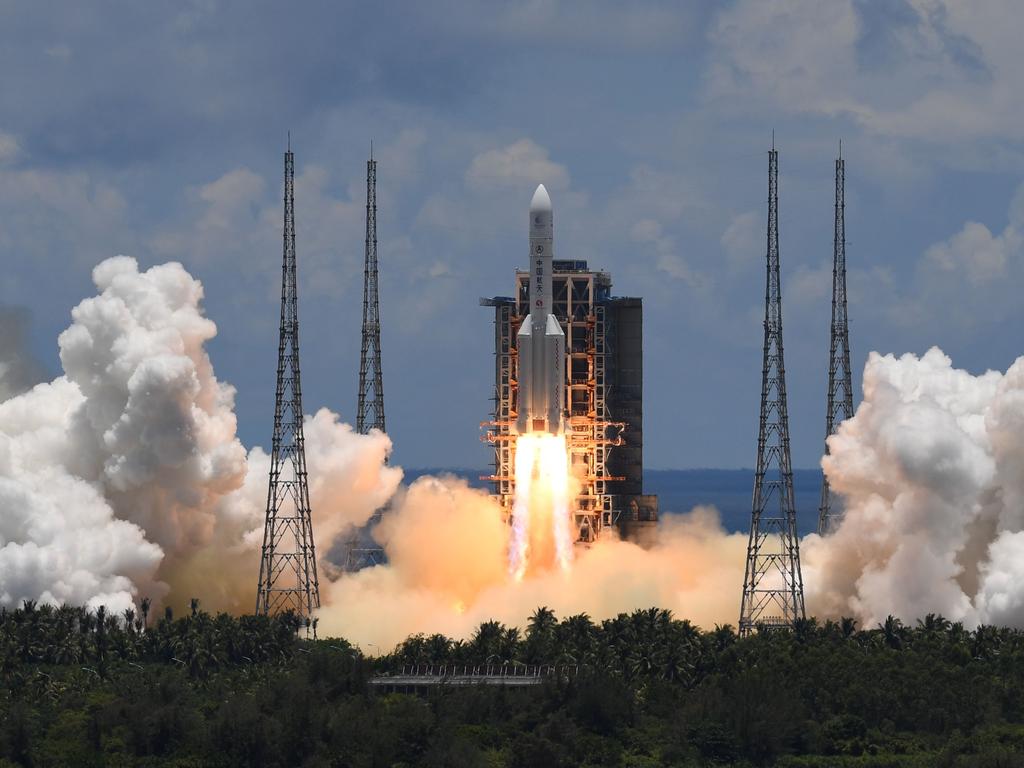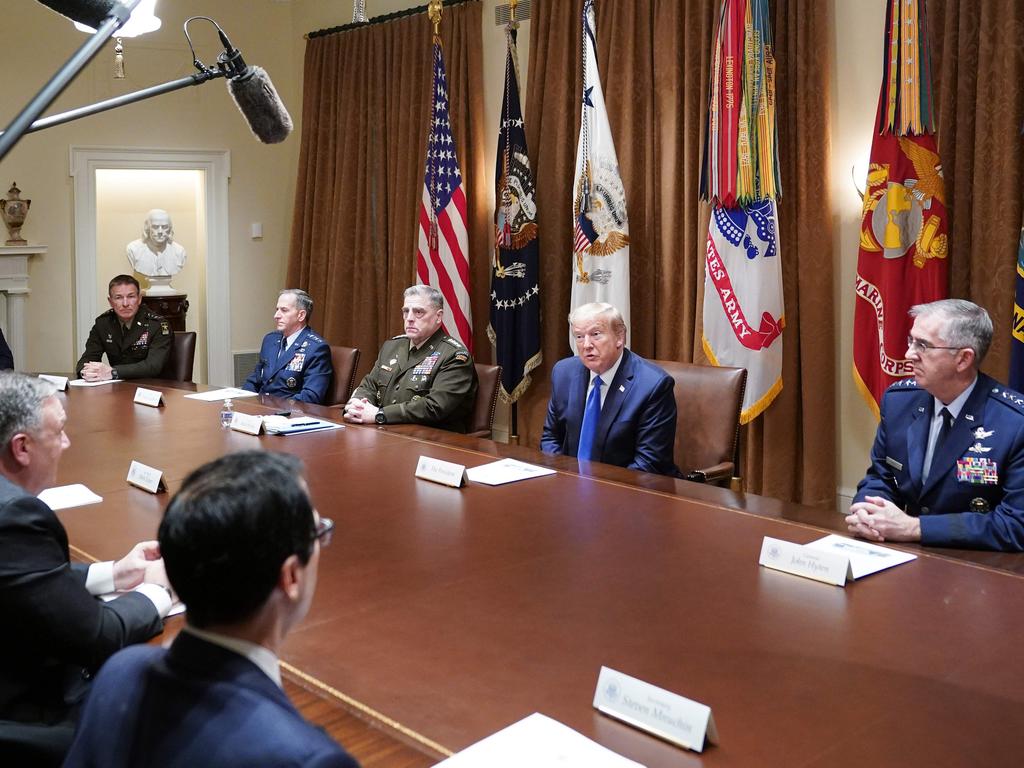US general says China could use hypersonic missile to launch surprise nuclear strike
America’s number two general says China’s hypersonic missile test shows it could one day be able to launch a surprise nuclear strike on the United States.
America’s number two general says China’s hypersonic missile test shows it could one day be able to launch a surprise nuclear strike on the United States.
“They look like a first-use weapon. That’s what those weapons look like to me,” General John Hyten, vice chairman of the Joint Chiefs of Staff, said in an interview with CBS News.
Mr Hyten revealed new details of the China’s orbital weapons tests earlier this year, which sent a nuclear-capable hypersonic missile around the world before landing close to its target.
“They launched a long-range missile,” he said.
“It went around the world, dropped off a hypersonic glide vehicle that glided all the way back to China, that impacted a target in China.”
Asked if it hit the target, Mr Hyten replied, “Close enough.”
Hypersonic missiles, like traditional intercontinental ballistic missiles (ICBMs), can fly more than five times the speed of sound (Mach 5).
But they are more manoeuvrable than their ballistic counterparts and can trace a low trajectory in the atmosphere, making them harder to defend against.

US missile defence systems are designed to target the fixed parabolic trajectory of ICBMs, which launch up and down like a cannonball.
Since the Cold War, the delicate nuclear balance between the US and Russia has depended on neither side having the ability to launch a successful first strike.
Mr Hyten warned China’s hypersonic weapon, combined with hundreds of traditional missile silos it is building, meant it could one day have the ability to launch a surprise nuclear attack on the US, up-ending that balance.
China has denied the reported tests, saying they were routine spacecraft launches.
Foreign Ministry spokesman Wang Wenbin rejected accusations from US Defence Secretary Lloyd Austin that China’s advanced weapons development was increasing regional tensions.
China could use its hypersonic weapons in surprise nuclear attack on US: top military officialhttps://t.co/6DfGcfrDwX
— Fox News (@FoxNews) November 17, 2021
“China will never be engaged in nuclear arms race with any country,” Mr Wang told a press conference last month.
“The sole aim of China’s development of necessary military capabilities is to safeguard its legitimate security interests.”
Chairman of the Joint Chiefs of Staff General Mark Milley last month officially confirmed the test, first reported by the Financial Times, saying it was close to a “Sputnik moment”.
“What we saw was a very significant event of a test of a hypersonic weapons system, and it is very concerning,” Mr Milley told Bloomberg TV.
“I think I saw in some of the newspapers, they used the term ‘Sputnik moment’. I don’t know if it’s quite a Sputnik moment, but I think it’s very close to that. So it’s a very significant technological event that occurred, or test that occurred, by the Chinese, and it has all of our attention.”

Asked if he agreed with that characterisation, Mr Hyten told CBS News that “from a technology perspective, it’s pretty impressive”.
“But Sputnik created a sense of urgency in the United States,” he said. “The test on July 27 did not create that sense of urgency. I think it probably should create a sense of urgency.”
The Soviet Union’s successful launch in October 1957 of the first artificial Earth satellite, the Sputnik 1, sent shockwaves through the west and sparked a crisis over the perceived technological gap between the Communist nation and the US.
Mr Hyten said while the US was developing its own hypersonic weapons, China was well ahead.
The US has conducted only nine tests in the last five years, while China has carried out hundreds and has already deployed one medium-range hypersonic missile, the DF-17, which can travel around 2000km and can carry nuclear warheads.
Russia recently launched a hypersonic missile, the Zircon, from a submarine, and since late 2019 has had the hypersonic nuclear-capable Avangard missiles in service. The Avangard can travel at up to Mach 27, changing course and altitude.
The Pentagon hopes to deploy its first hypersonic weapons by 2025 and has said their development is one of its “highest priorities”.
It comes as the US prepares to release its latest nuclear posture review, which lays out the circumstances in which nuclear weapons could be used.

US allies including Australia fear President Joe Biden will adopt a “sole purpose” or “no first use” policy and abandon the long-held doctrine of strategic ambiguity.
George Robertson, former UK Defence Secretary and the 10th Secretary General of NATO, warned in an opinion piece for the Financial Times on Sunday that while “no first use” sounded appealing, it could actually increase the risk of conflict.
“While nuclear ambiguity may be uncomfortable, it is necessary in order to reduce the temptation for adversaries to ‘game’ our deterrence strategy by taking actions that will fall just short of provoking a military response,” he wrote.
On Tuesday, the White House said Mr Biden and President Xi Jinping had agreed to explore talks on nuclear arms control at their virtual summit on Monday.
“The two leaders agreed that we would look to begin to carry forward discussions on strategic stability,” White House national security adviser Jake Sullivan said.
China has long rejected such talks, arguing that its nuclear stockpile pales in comparison to the US and Russia, which together possess the vast majority of the world’s nuclear warheads.
But a Pentagon assessment earlier this month found Beijing was planning to quadruple its arsenal over the next decade, and could have as many as 1000 nukes by 2030.
In a statement published by China’s Xinhua News Agency, Mr Xi indicated a willingness to address security issues.
“China and the United States can use the dialogue channels and mechanism platforms of the two countries’ diplomatic security … teams to promote pragmatic co-operation and solve specific problems,” he said.






